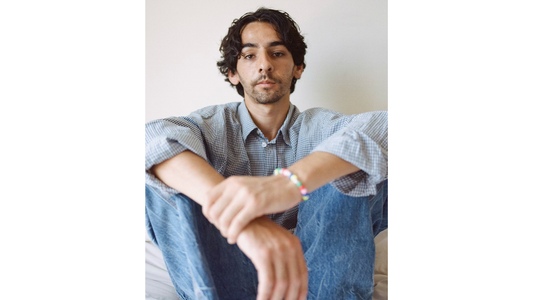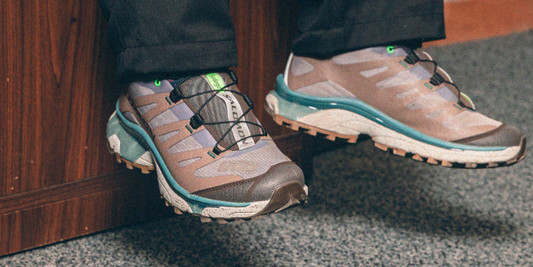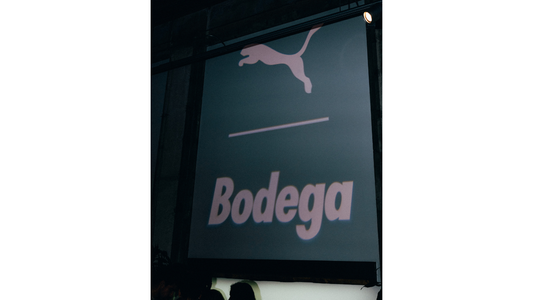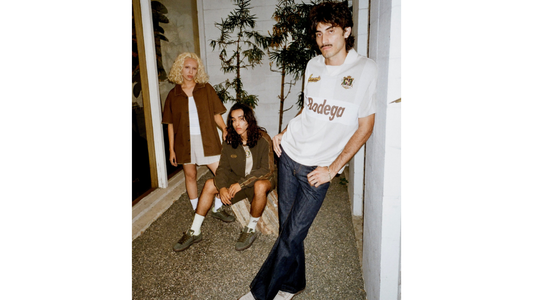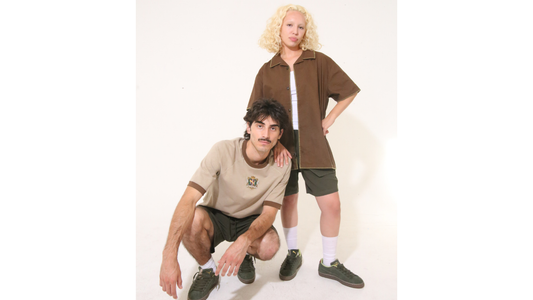Victoria Rose Adrian is a multi-disciplined artist focused on the lost crafts of chain stitching and rug tufting.
Though she began sewing at an early age, Adrian’s interest in the craft’s various techniques began with her job as head tailor at a denim company, and her eventual introduction to chain stitching. Today Adrian creates and operates out of her Brooklyn studio. Customizing apparel with retro-inspired and tattoo-styled designs, Adrian’s unique brand of chain stitching provides a fresh modern flair and unique perspective to an ancient technique that dates back to 5th Century BC China.
Two years ago, Adrian expanded her artistic scope to include crafting homemade rugs. Given the current state of affairs and the home-ridden lifestyle that has come as a result, home design and decor are at the forefront of our daily desires, making Adrian’s newest endeavor especially timely. It should be noted, however, these rugs aren’t necessarily meant for the floor, more often than not they are hung on the wall like the laborious pieces of art that they are.
How and when you began working with textiles and sewing techniques?
I grew up in a land where personal style was expressed in the color of North Face fleece you chose to wear. I was a baby blue. Progressive for a midwest suburb. Soon, North Face fleeces were not enough. I wanted more. I wanted different. So, I took to the sewing machine. With no sewing knowledge, I began deconstructing clothing and re-imagining pieces in hopes of making them my own. Those early collections weren’t always perfect, but they taught me to experiment. Which I still do to this day.
What led you to take on the ancient and sadly disappearing art of chain stitching?
Chain stitching found me. I was working as a denim tailor in my neighborhood, specializing in repairs. The owner of the shop acquired a chain stitch machine. No one knew how to use it. I volunteered to figure it out and soon, I was making simple designs and slowly developing a style. That machine allowed me to express my creativity in ways denim repair never could. I was hooked.
You are also known for your intricate rug designs. Which craft did you learn first? Do the two disciplines overlap at all? In skill and/or vision? Do you focus on one more than the other? Your instagram suggests that rugs have been your most recent focus.
Rug tufting is certainly my newest and most shiny obsession right now. I picked up my first rug tufting gun two years ago and found it satisfied my creativity in a similar way as embroidery, but on a much larger scale. That said, I will always love the mobility and impulsiveness of embroidery. .
When I first started embroidering, I found inspiration on the streets, on the sides of buildings and in architecture. A morning walk would result in inspiration. Embroidery helped me to realize my own potential. Transforming my technical knowledge of textiles into a creative outlet.
This same inspiration drives my rug making. The actual craft of the two are incredibly similar. There are common variants of control for the type of embroidery and rug styles you want executed. My embroidery machine can switch from a chain stitch to a chenille/moss stitch same as my tufting guns can create either a “loop pile” or a “cut pile” texture. The options to create or fill with different types of yarn or thread apply to both practices. I don’t think I would be where I am technically and creatively with my rug making, had I not had an understanding of embroidery beforehand. The freehand nature of both disciplines allow for the personal expression I crave. To me, the machines I use are no different than the varied brushes an artist uses to create
Has the pandemic led to rugs being your preferred discipline (home decor means more today than personal wardrobe.) How has it affected the mood or productivity of your artwork?
Oddly enough, the pandemic has resulted in some of my most joyful work. The embroidery market did slow down considerably. That slow down allowed me to concentrate on my rug tufting, Which has led to some interesting collaborations and opportunities to give back to those in need.
Do you provide accents to your own wardrobe, or is it more for others? Do you utilize your rug making skills for your own home?
Surprisingly very little. I went from learning to embroider to it turning into a full- time job pretty quickly so I didn’t have much time to create for myself. I realized I liked the process of making a piece more than actually having it to keep. I find more enjoyment in seeing someone excited about getting to wear it than myself. By the end of a project I have already stared at the piece for hours and dissected every inch of it so I’m okay with giving it some space. I do have a few of my rugs in my home and hanging in my studio. I love the sheer size of them and how they fill up a wall. It reminds me of how important patience is and what happens if you practice it. Oh, and I do tailor almost all of my clothing, it makes shopping incredibly easy.
How does your personal art differ from your commissioned art? Or do you approach it with similar styles?
I spent a lot of time producing other people’s art or ideas, Working as a tailor, that’s your job, to realize someone else’s vision. But it does take its toll.
The key to survival and personal happiness is to never stop creating. More specifically, never stop being creative. By always having a personal project in the works, I am always learning. Always experimenting. Always improving. Everything is then art. Everything then becomes rewarding. The moment I realized that I can approach everything as art, the work got better. Both personal and professional.
How many “pieces” of each would you say you’ve created?
I would have no idea! I’m less concerned with the number and more interested in the process. I am a huge advocate for preserving the process behind each piece. For that reason, I have an icloud full of videos and photographs documenting almost every stage of my pieces. I sometimes forget about projects that at the time, completely consumed my life, until I scroll through my photo albums. By the time I am finished with a piece I am already looking forward to the next so, I move pretty quickly.
Tell us about some of your most recent pieces/ favorite pieces.
Right now I am completely enamored with experimenting with smart textiles and fibers. I have spent the last couple months focusing on dyeing techniques specifically using thermochromic pigments and formulas. As well as experimenting with UV activated and glow in the dark material. As I have been so focused on rug making lately, I wanted to reignite my passion of sewing and embroidery with a new sort of medium with reactive fibers. My recent “Energy” rug would be among one of my more recent favorites primarily because of its organic nature. The design was created by distorting text on a xerox machine. To make the rug I hand dyed over 2,000 yards of cotton using thermochromic heat reactive dye. As much as I wanted to control this step, I realized I had to let nature (in this case science) run its course. This piece allowed me to step back and let go of having complete control (in just the right amount).
How have you seen your work change over time?
I see my work change on a daily basis. When I sit down to design a piece whether it be a rug, an embroidery design, or garment, it will surely be unrecognizable by the time the piece is finished. I am most inspired mid process, This is where most of the learning takes place. I am always sketching up the next concept or project before completing the last. This results in an ever-evolving process which I find exciting.
What do you hope people get from your work?
Creating a piece takes a lot of time and energy. Before I ever turn on a machine, or pick up a needle, I’ve researched, plotted, and analyzed every aspect of it. People may never know the five times I’ve re-worked or redone a piece to make it perfect. The hemming and unhemming. The redyeing of yarns. I do it, because I want to be proud of every piece. In the end, I hope people know that I’ve put my whole self into each piece.
Photography: Alex Nawrocky


